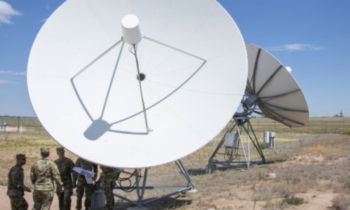Subsea internet cables in the Red Sea were severed last week, prompting calls for satellite companies to help maintain connectivity between Europe and Asia.
Based in Hong Kong, cable operator HGC Global Communications is assisting in the rerouting of affected traffic. Approximately 15 underwater cables in the Red Sea are affected, of which 4 are affected.
As to the Washington Post, which cited a subsea cable expert at TeleGeography, only three cables had been broken because two of them meet together at the cut area.
Notwithstanding, HGC said in its update on March 4 that approximately 25% of the traffic traveling via the Middle East, Europe, and Asia had experienced disruptions.
In the event that Yemen’s marine authority issues permission, a Seacom executive informed CNN that cable repairs might take as long as eight weeks.
Subsea cable companies are currently rerouting internet traffic between the continents, sometimes over less direct paths.
For instance, there have been reports of a noticeable slowdown in internet speed in East Africa, according to Rhys Morgan, a regional vice president for media and networks sales at Intelsat, a satellite fleet operator.
According to Morgan, organizations that rely on mission-critical data suffer financially from slower internet connections, and individuals who use sensitive data, such as governments, risk having it redirected through less secure nations.
Customers can use space-based internet traffic routing services provided by Intelsat and other satellite-based operators to transmit data from one location to another.
He stated that the connectivity problems underscore an increasing requirement for hybrid subsea cable and satellite networks, even if it is still unknown how the cables were broken.
Growing tensions in the area and the increasing geopolitical significance of the Svalbard archipelago in the Arctic Ocean led to media conjecture that Russia may have been responsible for a subsea cable breakdown in early 2022, however no concrete evidence has surfaced to support this theory.
According to Morgan, there has been a noticeable increase in the number of harmful instances associated to connectivity. “Discussions around submarines sitting near cables, intercepting traffic” are another issue.
Communication can be restored in 15 minutes for subsea cable users who have antennas and other equipment set up to access a backup satellite network, according to Morgan.
“hours or possibly days.” he continued, “If it’s a very large and sophisticated service and there’s a lot of terrestrial work needed then it could take a fair bit longer,”
In the event that a natural disaster destroys terrestrial infrastructure, satellite networks can also assist in swiftly reestablishing connectivity.
Following the damage caused by a volcano eruption in January 2022 to domestic and international telecom cables connecting Tonga in the South Pacific, Intelsat and SES said that their satellites had restored connectivity within days.



